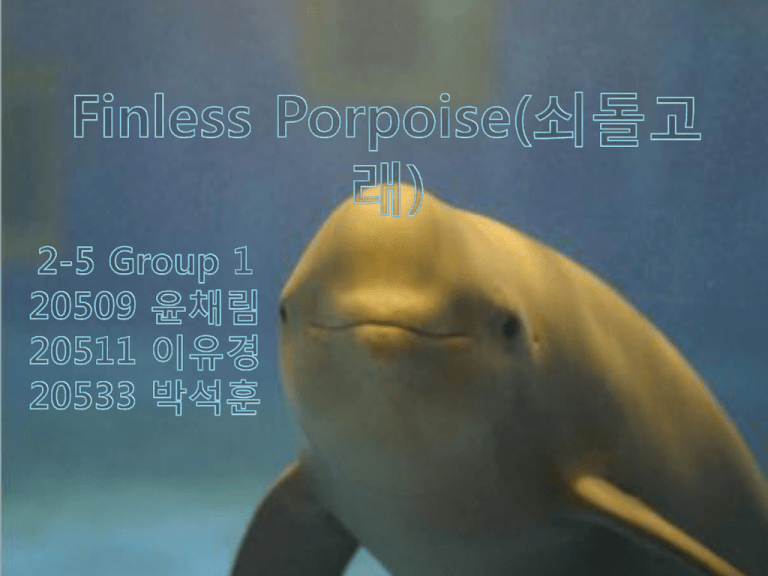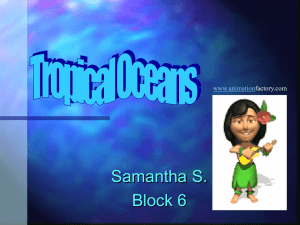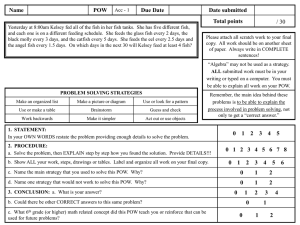Finless Porpoise - Anthony Teacher.com
advertisement

Finless porpoise live in wide range. They live in Pacific Ocean, Indian Ocean, and Persian Gulf. Sometimes, Finless porpoise come to Korea's Yellow Sea and Southern Sea. Finless porpoise is an dolphin which has no dorsal fin. It has a small body. Finless porpoise's length is 150cm and it weights 60kg, but it is little bit different from its habitat. Will you save me? PLEASE... The foods which Finless porpoise like is small fish like pacific sand lance(까 나리), horse mackerel(전갱이), and sardine(정어리). Finless porpoises are ENDANGERED! Estimates of abundance have been made only for specific areas in China and Japan. It is estimated that Yantze population is about 2700 individuals, but it is unclear if it is measured in winter or summer. In the Inland Sea of Japan, the number of porpoises observed during the breeding season was 4900 and by early winter the number dropped to 1600. Off western Kyushu, about 3100 are estimated and 200 in the Omura Bay. Finless porpoises were poached by illegal fishermen. They were caught and sold in very low prices or thrown to the sea. Now, about 1 thousand Finless porpoise is living in the Yangtze, but in 30 years, about 80% of them will be decreased. If there is no way to save them, they will die soon. Finless porpoise is decreasing 6.4% a year. From now on, 10 years will choose whether to protect Finless porpoise or let them extinct. China's long drought made Finless porpoise's habitat destruction We should protect whales from illegal poaching. We can join environmental groups like Save the Sea, Greenpeace, etc. We should tell adults and other students that we should save animals, because they are about to extinct! We can join environmental groups like WWF, Greenpeace, etc. Finless porpoise Captain group 20727권준섭,20713김현지 20703김소연 ,20718안현아 procedure Physical How many description Diet Saemangeum accident Distribution Conservation Status Swimming video Size Lifespan stly Scientific classification Schooling Physical description • The finless porpoise almost completely lacks a dorsal fin. Instead there is a low ridge covered in thick denticulate skin. • Adults are a uniform, light grey color. Adults grow more than 1.55 m in length and up to 30–45 kg in weight. Scientific classification • • • • Kingdom: Animal Class: Mammalian Subclass: Euphoria Order: Cetacean Size • Size comparison against an average human Distribution • The finless porpoise lives in the coastal waters of Asia, especially around Korea, India, China, Indonesia, Bangladesh and Japan. Conservation Status How many • In Korea, the annual number of Finless Porpoise incidental catch reported 365 in 2008, and 219 in 2009. Lifespan • Maximum longevity: 33 years: Normally, these animals do not live more than 20 years Swimming stly • Although they show no acrobatics in the water, finless porpoises are believed to be very active swimmers. Surfacing generally lasts for one minute, as they take three to four quick successive breaths, then quickly submerge into the water. Schooling • Recent data suggest the basic unit of a finless porpoise pod is a mother/calf pair or two adults, and schools of three or more individuals are aggregations of these units or of solitary individuals. Diet • Finless porpoises are reported to eat fish and shrimp in the Yangtze River, and fish, shrimp and squid in the Yellow Sea. In Japanese waters, they are known to eat fish, shrimp, squid, cattle fish and octopuses. • They also apparently ingest some plant material when living in estuaries, mangroves, and rivers, including leaves, rice, and eggs deposited on vegetation. Diet • Finless porpoises are reported to eat fish and shrimp in the Yangtze River, and fish, shrimp and squid in the Yellow Sea. In Japanese waters, they are known to eat fish, shrimp, squid, cattle fish and octopuses. • They also apparently ingest some plant material when living in estuaries, mangroves, and rivers, including leaves, rice, and eggs deposited on vegetation. Saemangeum accident 1. On the inside of the Saemangeum sea Finless porpoises activities are actively feeding Saemangeum accident 2 . As the temperature dips slowly covering up the inside of the ice shelf to the Saemangeum. Saemangeum accident • 3. Saemangeum sea ice shelf is covered inside and over time finless porpoise can’t breathe smoothly and death by asphyxiation. Why we should protect this animal • These days many animals are endangered because of people. We can suppose that our descendant can’t see Koalas, Finless porpoises, polar bears. what can we do to save these animal? • We have to ban the poaching, illegal logging. • Also we should prevent road kill or illegally throw away trash for their habitat and their life Please save us video • Finless Porpoise - YouTube Thank you very much









